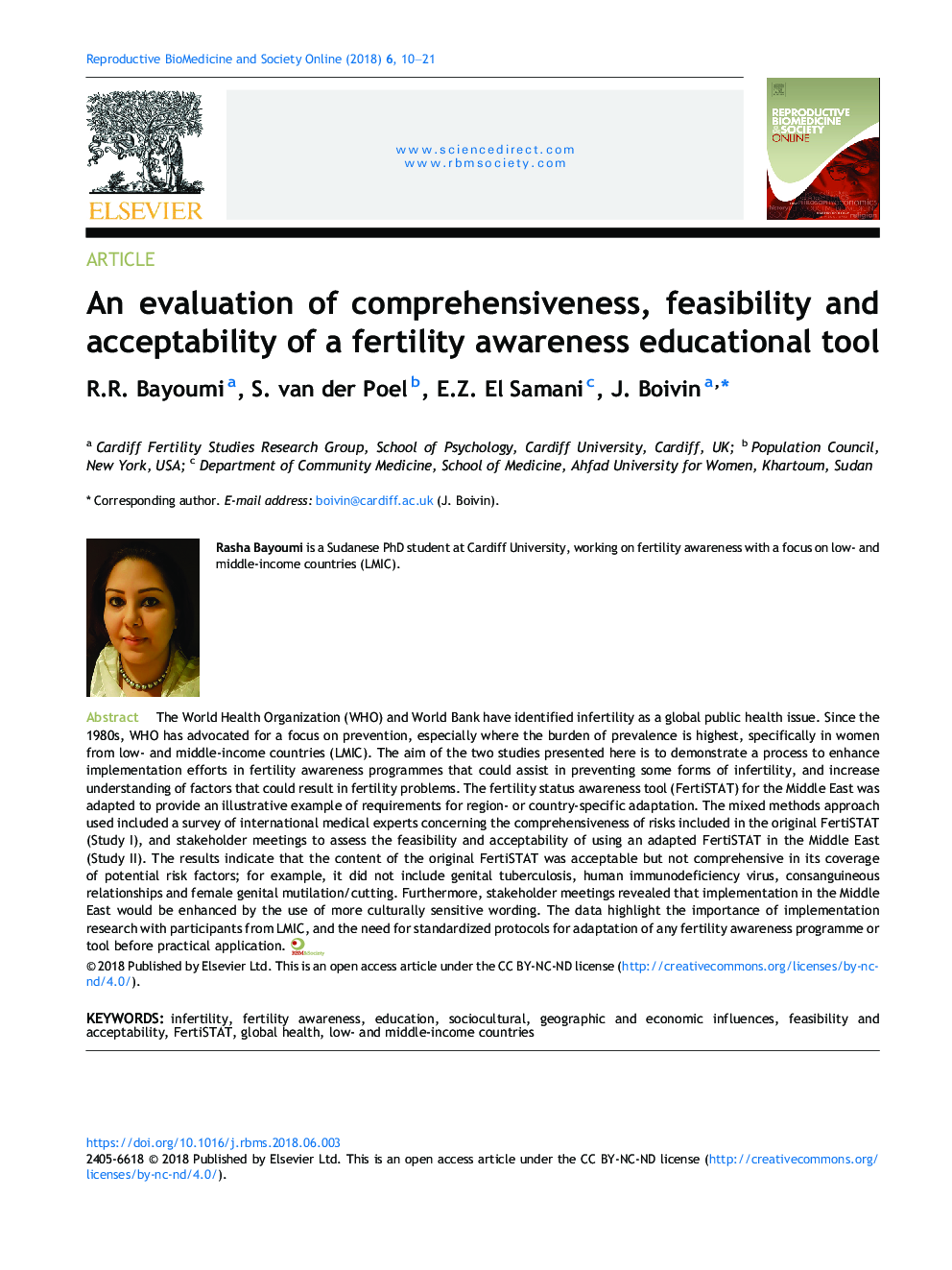| Article ID | Journal | Published Year | Pages | File Type |
|---|---|---|---|---|
| 10140676 | Reproductive Biomedicine & Society Online | 2018 | 12 Pages |
Abstract
The World Health Organization (WHO) and World Bank have identified infertility as a global public health issue. Since the 1980s, WHO has advocated for a focus on prevention, especially where the burden of prevalence is highest, specifically in women from low- and middle-income countries (LMIC). The aim of the two studies presented here is to demonstrate a process to enhance implementation efforts in fertility awareness programmes that could assist in preventing some forms of infertility, and increase understanding of factors that could result in fertility problems. The fertility status awareness tool (FertiSTAT) for the Middle East was adapted to provide an illustrative example of requirements for region- or country-specific adaptation. The mixed methods approach used included a survey of international medical experts concerning the comprehensiveness of risks included in the original FertiSTAT (Study I), and stakeholder meetings to assess the feasibility and acceptability of using an adapted FertiSTAT in the Middle East (Study II). The results indicate that the content of the original FertiSTAT was acceptable but not comprehensive in its coverage of potential risk factors; for example, it did not include genital tuberculosis, human immunodeficiency virus, consanguineous relationships and female genital mutilation/cutting. Furthermore, stakeholder meetings revealed that implementation in the Middle East would be enhanced by the use of more culturally sensitive wording. The data highlight the importance of implementation research with participants from LMIC, and the need for standardized protocols for adaptation of any fertility awareness programme or tool before practical application.
Keywords
Related Topics
Health Sciences
Medicine and Dentistry
Obstetrics, Gynecology and Women's Health
Authors
R.R. Bayoumi, S. van der Poel, E.Z. El Samani, J. Boivin,
